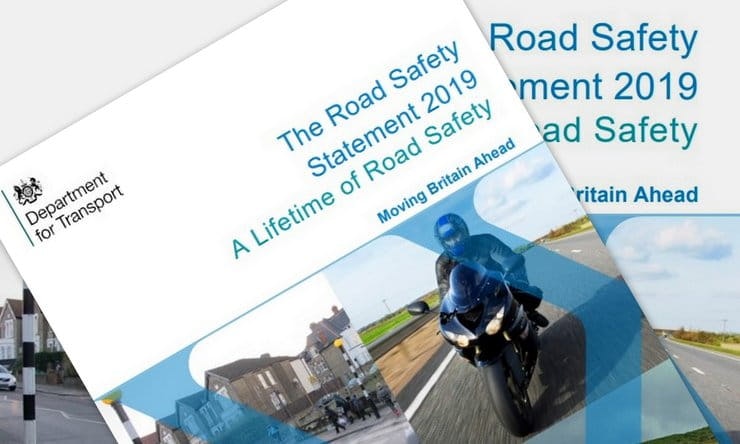Government proposes changes for safer riding
By Ben Purvis
Motorcycle Journalist
19.07.2019
The Department for Transport has unveiled its new Road Safety Statement including 74 proposed actions aimed at reducing deaths and injuries on the roads – and motorcyclists are one of four groups of road users that it particularly focuses on.
Along with riders, the plan also picks out young road users, rural road users and ‘older vulnerable road users’ as its main targets, as well as suggesting a range of more general changes.
You might have already seen some of the headlines that the plan has stirred up in the mainstream press. Among the attention-getting plans are ideas to consider motorcycle-style graduated licences for car drivers – potentially including restrictions on new drivers like minimum learning periods or limits on driving at night or carrying passengers – and proposals to toughen seatbelt rules and impose penalty points on drivers who don’t wear them.
Of course, the full 74-point plan includes a host of other things but for us the key parts are those that focus on bikes.
Here, the plan’s main focus is on training. Its ideas include proposals to boost standards for motorcycle instructors, improving their training and assessment, and to change the CBT to include a theory test. Further ideas include a seemingly sensible proposal that if a new rider takes his or her CBT on an automatic twist-and-go scooter, they should be restricted to that sort of bike, with consultation to take place on how to implement a sensible method to upgrade their entitlement to use manual clutches and gearboxes.
The plan also includes the idea to implement a system that recognises bike training schools that perform to a consistently high standard.
Riders who take CBTs but don’t go on to get their full licences are also mentioned, with the DVSA being charged with the responsibility to encourage them to take further training.
Bike clothing is also mentioned. The SHARP helmet rating scheme is set to continue and the DfT is to work with the UK bike industry and motorcycle groups to develop methods to encourage riders to wear the best protective equipment for their needs, and to see if that kit needs to be improved.
Another focus is the growing number of people taking to two wheels as part of the growing ‘gig economy’ who are flocking to mopeds and e-bikes, often with little training. The Government says it will be commissioning more research into the area to see how to reduce risks.
The full list of motorcycle related actions to be taken under the new plan is as follows:
Continue to promote the importance of helmets and their correct usage through the DfT SHARP programme
In response to a consultation DVSA will explore the possibility of developing a package of measures to improve the motorcycle training regime once Parliamentary time allows
Promote DVSA's Enhanced Rider Scheme and increase the uptake of post-test motorcycle training
Develop a training framework/syllabus to encourage riders who complete CBT but do not go on to take full test training to undertake further training
Work with the motorcycle industry to explore how to encourage the use of protective equipment and furthermore explore the scope for new protective equipment for vulnerable road users that can reduce post-crash collision severity
Commission a review of the behaviour of drivers and riders in The Gig Economy
Highways England to deliver safety advice to leisure riders
Funding RoSPA to deliver an online guide on how to organise and conduct group motorcycle ride outs
You can download the entire 69-page document from the Government website here.
Share on social media:
